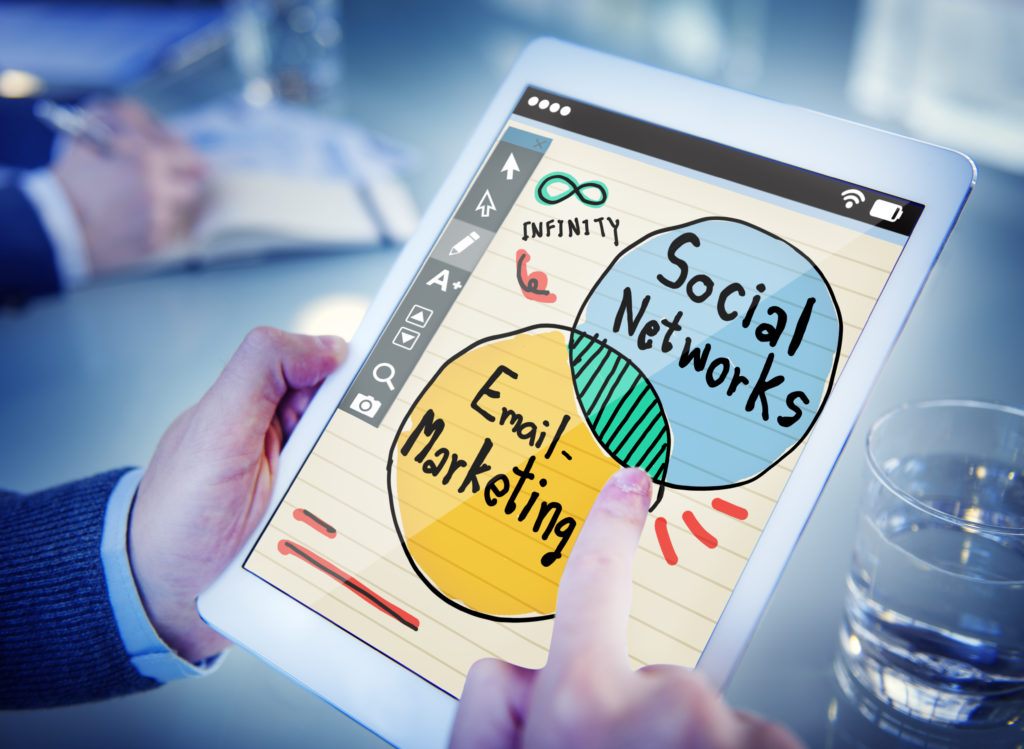TOP 5 EMAIL CONVERSION STRATEGIES FOR SMALL BUSINESS

Companies with billion-dollar marketing budgets can afford to spin a few wheels, but when you’re a small business owner, you need to see results from every channel, including email conversion. Email marketing is a low-cost and mobile-friendly approach, but without sufficient ROI, what’s the point?
The Radicati Group, a technology marketing research firm, reports that 205 billion emails go out daily, and that number is expected to rise. What this means for small business owners is that email is still one of the most productive ways to reach out, whether you’re promoting a product or service to current customers or looking to bring in new business. Through email, you can connect to the right person with a personalized message just when they need to see it.
The question isn’t whether small businesses should take advantage of the benefits that come from email campaigns, but how they can get the most conversions from them. You’ll want tangible results, like solid delivery rates and improved brand recognition, so you know you’re not just spinning those wheels. Consider these five top email conversion strategies created with small businesses in mind.
1. Get Personal to Nurture Relationships
Emails should not read like a print or internet ad, but they should enhance the customer experience by offering a personal touch. An email study conducted by Experian Marketing Services found that personalizing emails increased conversion rates six-fold, as noted in this Marketing Land article. It’s the difference between addressing someone by name or yelling, “Hey you,” at them.
The same study indicates that many big brands fail to take this extra step. Addressing your customer by name means you can create emails that are memorable in a sea of click-bait messages and spam marketing.
Where you add that little personal touch matters, too–the first thing any reader sees is the subject line, so that is a good place to start. The rest of your message doesn’t have a chance if you can’t get a customer to open it. Something as simple as a person’s name is enough to grab their attention and increase your open rates by about 16 percent. That ability to make each message stand out in a personal way is why email marketing matters for small businesses.
2. Ask the Right Questions

Your “Get Personal” strategy relies on having the right customer information up front. You can buy big data from outside sources, but it’s better to collect as much as possible on your own using a web form, sign-ups or surveys.
Go beyond just name and email address, too. Use your buyer personas to figure out the ideal questions to ask. For example, gather information about B2B companies such as business size, job titles and specific challenges they face with vendors. Your B2C email marketing might inquire casually about income levels, education and number of kids.
With the proper information in hand, you can segment your emails to target the right person in the right way, and enhance your lead nurturing organically.
3. Monitor the Marketing Metrics
You can also match the various demographics with the metrics to see what works and what fails. Critical email metrics to watch include:
- Conversion rate – Number of people who click on a link to complete the key action of the email
- Click-through rate – Percentage of clicks the email gets for any action
- Bounce rate – Percentage of emails that could not be delivered
- Open rate – Number of recipients who actually opened the email
- Unsubscribe rate – How many people asked to be taken off the list after getting an email
Analytics are the heart of marketing because you use them to develop future goals, calculate ROI and evaluate how other marketing channels might work with your current marketing strategies. A good example is measuring how many of your emails led to social media shares. It’s all virtually interconnected.
4. Let the Email Reflect Your Brand
To customers, you are not a small business owner trying to make a living, but a brand. Branding is what separates your business from the competition and it requires consistency to make a connection that sticks. For example:
- Your car doesn’t need an engine lube, it needs a Jiffy Lube.
- If you have a cold, you don’t want a facial tissue, you want a Kleenex.
- Your child doesn’t color with wax sticks, but Crayola crayons.
These brands didn’t happen overnight. It took years of consistent marketing. A brand is identified by more than just a logo. Identify your brand in email marketing by focusing on:
- Color
- Tone
- Message
- Graphics
As you construct an email, keep your brand in mind when drafting copy, developing the color layout and creating the overall tone. Mixing and matching with each campaign will just confuse your audience and lessen the brand effect.
5. Make it Mobile

As of 2016, 54 percent of users open emails using a mobile device. That’s not surprising when you consider 95 percent of Americans carry a cellphone and 77 percent have smartphones. Even the basic feature phones offer email access. If you want to improve the results of your email campaigns, recognize from the start that a certain percentage of your recipients rely on mobile devices, then plan accordingly.
Don’t assume that your email works well for mobile. Make the effort to optimize each email message so it has the same impact whether opened via desktop or smartphone. Email copy should be brief but engaging, so you grab the reader’s attention and get your point across without too much scrolling. If possible, outline the critical talking points using a bullet list, so the reader can scan quickly while they are standing in line at the grocery store or getting a haircut. Dense emails are uninviting and are quickly closed.
Proper email marketing allows you to painstakingly segment each campaign to reach your ideal target in a personal way, so you can treat each prospect like something other than a lead. If you fail, you risk ending up in the dreaded “spam folder” for eternity. Instead, see your list grow each year with a little forethought and planning. Effective email marketing does more than just sell products–it builds relationships that last.
Feeling overwhelmed? Contact us for help creating well-crafted email marketing campaigns and harnessing the power of automated email marketing. We’re experts in the latest ways to build lead generation and strengthen customer relationships for long-term growth.